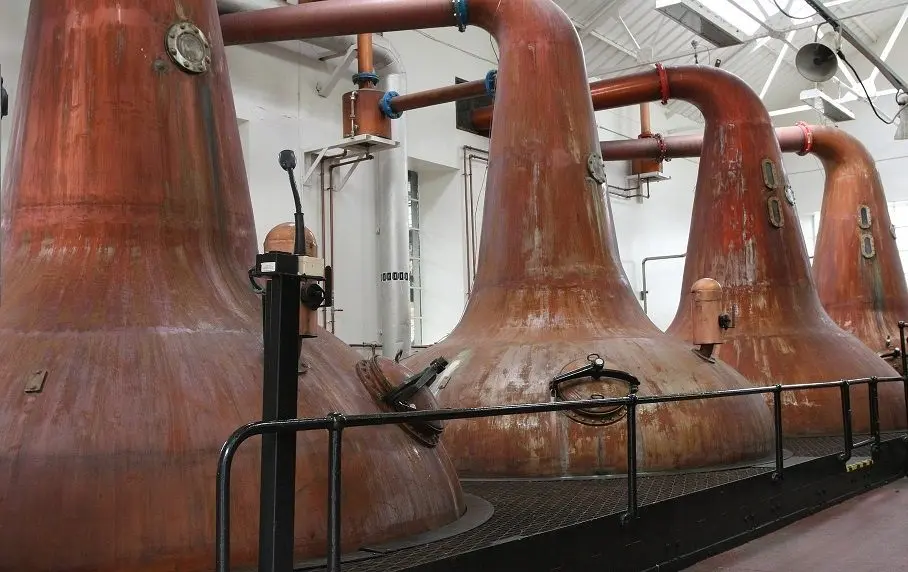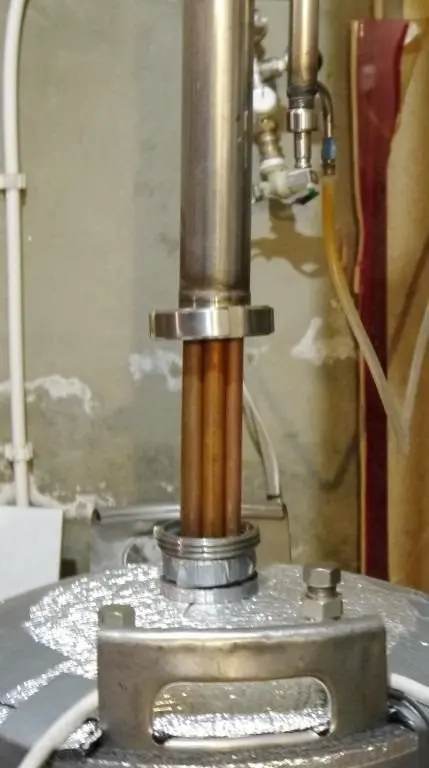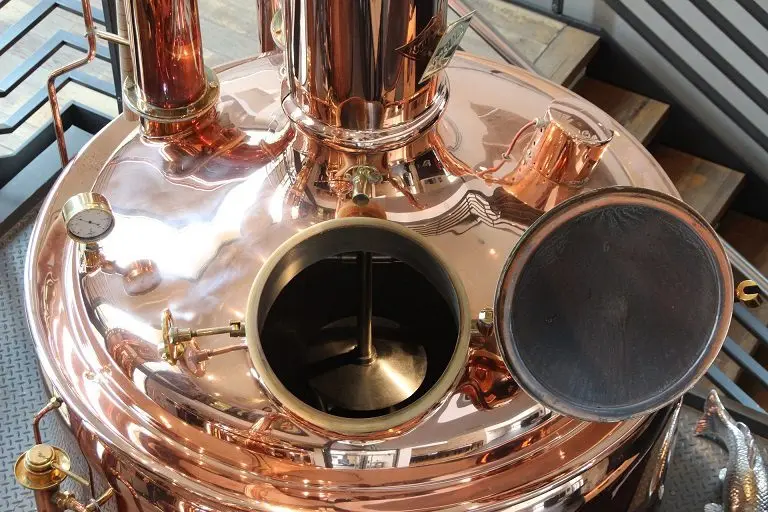Initially, copper in moonshine stills began to be used because of the comparative cheapness, good malleability, corrosion resistance and high thermal conductivity of this metal. But even after a more suitable material appeared – stainless steel, copper devices remained in use, as it turned out that copper had a positive effect on the organoleptic properties of distillates. True, you have to pay for the excellent taste and aroma with health – some substances from the mash form harmful impurities upon contact with copper. The good news is that the amount of such impurities can be minimized by proper distillation or column design.
Theory
Copper is a reactive metal. This means that during distillation, copper oxides and ions interact with alcohol vapors, causing exchange, oxidation and reduction reactions. As a result, copper takes some substances from alcohol, introduces others and modifies others. For example, copper alambik, during the distillation of cognac, acts as a catalyst for the recombination of esters, due to which the characteristic caramel and fruit notes are enhanced. Whiskey production is not complete without copper alambiks.
The most valuable property of copper for home brewing is its interaction with bad-smelling sulfur compounds. Due to this, the aroma of the drink improves, but a hard coating appears on the contact area of copper with sulfur and dangerous substances are released that can get into the selection. Plaque does not allow copper to interact with alcohol vapors, and the decomposition products of sulfur compounds are harmful to health. Therefore, the contact area of copper devices must be cleaned to a shine and copper oxides should not be allowed to enter the selection.
Harmful substances formed by contact with copper can only get into the distillate when the alcohol condenses inside the refrigerator. In other parts of the apparatus, they settle on the pipes, the sides of the beer columns or the alambic helmet, then are partially washed off by phlegm back into the distillation cube.

Therefore, the correct design of a moonshine still or column, along with constant and thorough cleaning of copper parts, allows you to use all the advantages of copper for good and not be afraid of harmful substances.
It is also worth noting that copper is relevant in the distillation of grain, fruit and berry brews – that is, where you can get notes of aroma and taste. A copper moonshine is also suitable for the first distillation of sugar mash in order to destroy sulfur compounds, however, it will not be possible to significantly improve the taste of such moonshine, since there is initially nothing to improve. Such an undertaking is usually not worth the time spent on subsequent cleaning of equipment. Copper is useless in the rectification of alcohol, and copper nozzles are even harmful.
The practical use of copper in home brewing
Important! It is permissible to use only edible copper in moonshine stills and columns. Plumbing pipes, tubes from cars, refrigeration equipment and machine tools contain an alloy of copper and other metals that is not designed for high temperatures. It is impossible to predict what substances are obtained when such an alloy comes into contact with alcohol vapor. Often there are very harmful impurities.
It is permissible to use copper in columns and moonshine only in those areas where alcohol vapor rises, and all oxides formed are washed off by phlegm back into the distillation cube. Copper can be: a lid and the cube itself, a pipe in a column and a nozzle in a pipe, caps of a tray column, a dephlegmator with a steam selection scheme (difficulty with cleaning arises).
In downstream flows and in the cooler of the moonshine still (column), copper does more harm than good because of the hazardous substances washed into the selection. Here it is more correct to take a stainless steel – you get a combined apparatus made of copper and stainless steel. In extreme cases, you can tin all downstream copper parts with tin, this is more true for alambiks.
In order for copper to destroy sulfur compounds, its surface must be mechanically cleaned to a shine. It is problematic to do this with a nozzle, so copper SPN and on-load tap-changers are not as effective as they are told in moonshiner stores.
A more interesting modernization of the apparatus for the distillation of fruit and grain brews is to refine the ascending pipe of the column (tsargi). To do this, a copper tube with a diameter of 12-16 mm is cut into 4-6 pieces along a length equal to the height of the column. Then the tubes are folded together like a revolver drum and inserted into the column side. As a result, the area of contact between alcohol vapors and copper is obtained almost like that of an alambic, while the design is relatively easy to clean.

How to clean copper at home
Oxides on the copper surface prevent the contact of alcohol with the metal – all the advantages of using copper disappear and the heat transfer properties of the equipment deteriorate.
Copper moonshine stills and columns need regular cleaning, ideally after each distillation or when visible plaque appears. At the same time, the plaque is first removed by chemical methods, and then the copper is polished to a shine, trying not to scratch it. It is also important to periodically clean the outside of the apparatus in order to maintain high thermal conductivity.
Copper cleaners:
- Hot bard. Immerse pipes, nozzles and other small copper elements in the liquid remaining after distillation in a cube or pour the stillage into a saucepan if the neck of the cube is too narrow. Bring to a boil and simmer over low heat for 15 minutes, then rinse with cold water.
- Lemon acid. Dosage: 15 g per 1 liter of water. Soak copper parts in citric acid solution for 20 minutes, then rinse with water.
- Soap and sponge. You can polish copper with warm water, ordinary soap and a dishwashing sponge. After the procedure, rinse the copper part with plenty of water so that the smell of soap is not absorbed inside, then wipe it dry with a clean cloth.

Attention! Copper quickly absorbs odors, so cola, ketchup, and other substances that have a strong aroma are undesirable for cleaning.









